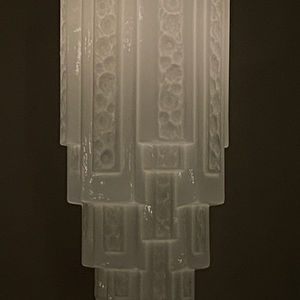
The Little Theatre
Process of Designing Permanent and Temporary Signage
Skills: Photoshop and Illustrator
About The Project
WHAT IS THE LITTLE THEATRE?
The Little Theatre, a historic gem in Rochester dating back to the 1920s, stands as a testament to the city's cultural heritage. Nestled within its walls are a quaint theater, a charming merch shop, a cozy café, and captivating live performances. The essence of the Little Theatre lies in its commitment to preserving the past, showcasing a mix of new releases and indie films, both domestic and foreign. This cinematic haven strives to foster artistic expression within the Rochester community, contributing to the vibrant tapestry of the city. Among the captivating films scheduled for this month is the timeless classic "The Mask of Zorro" and a myriad of other cinematic gems.
My visit to the Little Theatre was an enchanting experience, particularly as I settled in to watch the Czech film "When the Cat Comes," produced in 1963. As I explored the venue, the pervasive Art Deco style caught my eye, adorning the walls, chandelier, staircase, ticket booth, concession stand, and even the theater seats. The intricate art, reminiscent of 1920s comic books and Uncle Sam posters, evoked a sense of nostalgia, akin to the timeless allure of the Casablanca movie poster. The theater's commitment to maintaining this antique charm throughout its various element left a lasting impression on me.

Signage for the Little Theatre

Day and Night Time Display

Temporary Sign Designs
Process
INTERIOR AND EXTERIOR LAYOUT OF LITTLE THEATRE

Research
BRANDING
The theatre's branding predominantly embraces modernism with an Art Deco flair. Capturing this aesthetic, I photographed various elements, discovering that fonts like Vortise Concept, Wedding Gothic ATF Heavy, and P22 Undergone Heavy Small Caps graced the theater's signage. The color palette of yellow, red, white, black, and hints of maroon further enhances the visual identity.
POTENTIAL EVENTS
The idea behind these special events are reminiscence of the 1920 events which I would like to present to the newer generation which I believe stays true with what the Little Theatre does.
1. 100th-year anniversary celebration
2. Special movie premieres
3. A potential George Melies film debut
4. Speakeasy even
5. Performances by local and renowned jazz artists.

Potential Sign Locations

Concept Sketches & Ideations 1-4
CONCEPT 1 ( Went with this idea)
Inspired by Korean marketing tactics of designing personalized movie tickets for specific indie films, this inspired me to produce a standing signage resembling conceptualized movie tickets with an Art Deco touch could offer a unique and visually appealing promotional strategy. Right below you will see where I got my inspiration from.

After comparing Concept 1 with the other iterations, I chose to move forward with it because I saw strong potential for developing multiple variations from that direction.
In the following sketches, you’ll notice I explored materials such as glass, metal, and wood. Ultimately, I decided against all of them and selected marble for the permanent structure. Marble felt most fitting due to its elegance, water resistance, and its ability to complement the exterior of the Little Theatre.
For the final design, the physical ticket structure will be permanent and placed at the front entrance next to the Little Theatre. However, the poster displayed within the structure will be temporary, allowing for updates based on current shows and events

CONCEPT 2
I truly admire the vintage charm of the Little Theatre and wanted to find a way to honor how it preserves classic cinema and art. To explore this, I researched preservation methods—ranging from time capsules to glass displays—to understand how objects can visually communicate longevity and value.
Using this idea, I put a creative spin on the concept by combining old and new elements. I decided to design my own preservation model using jello as a playful material to encapsulate small objects, such as knick-knacks that represent historical artifacts. If this concept were executed at full scale, the materials would instead be resin and silicone to ensure durability and permanence.

CONCEPT 3
The next concept is a simple watercolor painting of the theater, inspired by Art Deco designs and illustrations from the 1920s to honor and preserve its original aesthetic. While acrylic or oil paint could have been suitable options, I intentionally chose watercolor. Its softness, liveliness, and vibrancy perfectly reflect the character of the theater. Additionally, watercolor often carries a dreamy, atmospheric quality, whereas other paint types tend to appear more realistic and sometimes visually harsh.

CONCEPT 4
Lastly, while it may seem like a simple choice, I believe photography is an excellent direction for another concept. My plan is to photograph the theater and present the image as if it were taken in the 1920s—applying a subtle brown hue to a black-and-white composition to reflect the theater’s historical character.
Using Photoshop, I will incorporate typography inspired by earlier-mentioned fonts as well as authentic styles from the 1920s. Although this concept is straightforward, it has strong potential. Could this approach be versatile enough to be used for other applications, such as movie premieres or event promotions?

Previous Design
TEMPORARY SIGNAGE DESIGNS

Previous Design
PERMANENT SIGNAGE DESIGNS


Portfolio
Check it out!






















